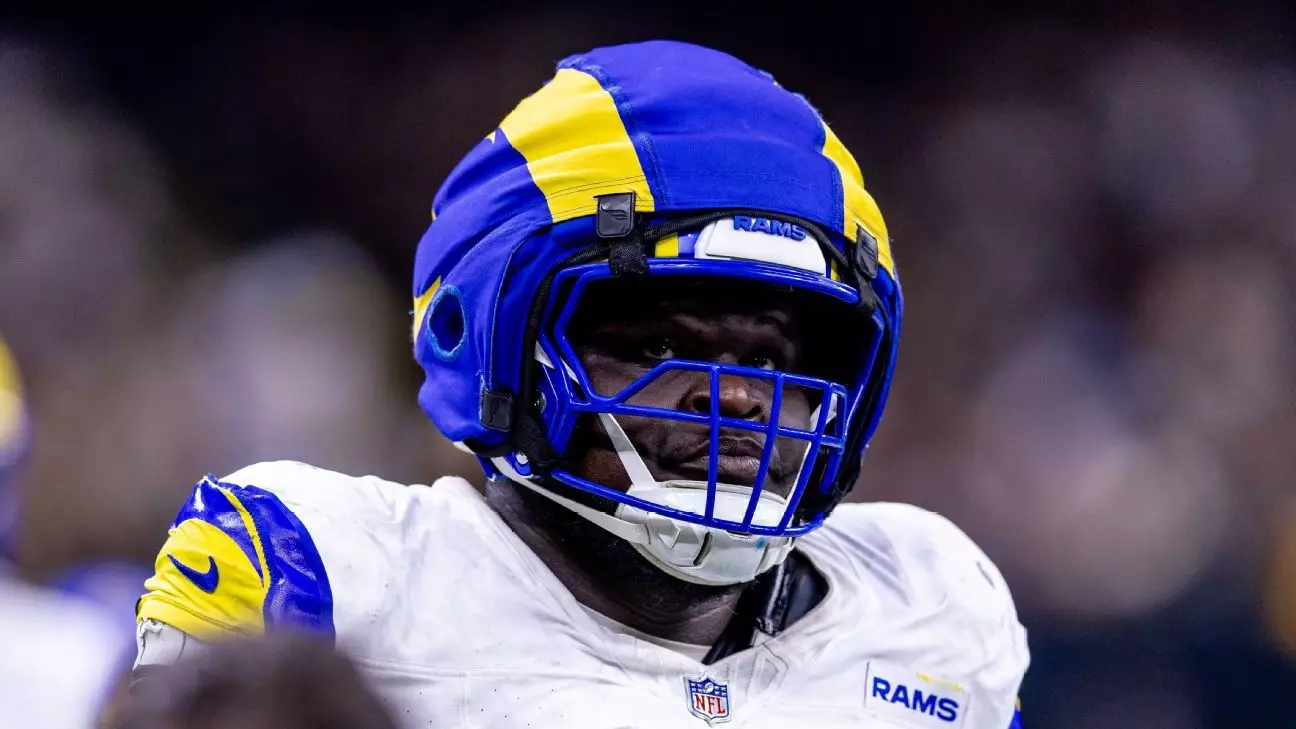The National Football League (NFL) recently announced encouraging statistics regarding player safety, particularly focusing on concussions. According to the league, the 2024 season recorded the lowest number of concussions since they started monitoring the data in 2015, with a total of 182 concussions. This figure conveys a significant 17% decrease compared to the previous year’s total, marking a pivotal moment in the ongoing efforts to safeguard the players. While these statistics are promising, they also highlight the urgent need for continued vigilance and innovative strategies in player protection.
Statistical Context: Evaluating the Data
The total of 182 recorded concussions stands out against the league’s five-year average of 211.4, not accounting for the atypical 2020 season when COVID-19 significantly disrupted traditional protocols. Comparing this season’s figures to those of the previous low in 2022, which recorded 187 concussions, underscores a positive trajectory for the NFL in minimizing head injuries. However, these numbers do not allow for complacency. Dr. Allen Sills, the NFL’s chief medical officer, emphasized the necessity for ongoing improvements and identified the reduction in concussions as only a step in a longer journey toward player safety.
Several elements contribute to this drop in concussions, particularly advancements in helmet technology and safety protocols during training and games. The NFL mandated the use of Guardian Caps during practice sessions, which reportedly assists in reducing the incidence of concussions by a notable margin. Additionally, there has been a marked increase in players opting for improved helmet designs; 35% of players upgraded their headgear this past season compared to only 14-17% in prior years. Such upgrades, along with position-specific helmet choices by a third of eligible players, reflect a growing awareness among athletes regarding safety.
The NFL also modified the kickoff rules, leading to an impressive 43% drop in concussions during that play—though the overall total remained constant due to an increase in returns. This adaptation illustrates how rule changes can both enhance safety and maintain the essence of the game, ensuring that player welfare does not come at the expense of competition.
The effective reduction in concussions is partnered with promising developments in overall injury rates. The new kickoff rule helped balance the injury rates across different types of plays, leading to historically low numbers in situations previously deemed high-risk. Moreover, the absence of on-field penalties related to the new hip-drop tackle rule reflects a learning curve for officiating in the league, which has potential to further improve player safety over time.
Additionally, the NFL has begun collecting data on helmet impacts, particularly during high-velocity plays. Initial findings indicate that these hits pose a significantly increased risk for concussions, amplifying the importance of preventive measures in training and gameplay. The league’s commitment to compiling and analyzing this data demonstrates a proactive stance in evolving player health standards.
Despite the progress indicated by these statistics, it is crucial to approach this topic with realism. While the numbers are encouraging, they do not imply that the work is finished. Dr. Sills’ insistence on continued vigilance serves as a reminder that both on-field practices and player education must evolve in tandem with game developments. Areas requiring further focus include the consistent enforcement of safety protocols and ongoing education for players about the risks associated with different types of tackles and impacts.
Furthermore, while the results of helmet safety assessments imply progress, the small percentage of players who wore Guardian Caps during regular-season games illustrates that adherence to safety practices requires cultural shifts within the sport. The focus must now shift toward widespread adoption of these practices within locker rooms league-wide.
As the NFL navigates the balance between preserving the intensity of the game and ensuring player safety, the recent drop in concussion numbers is a notable success. The advancements in helmet technology and a commitment to innovative safety practices reflect a broader movement toward protecting athletes. However, the journey toward a safer NFL is ongoing. Continued commitment to research, education, and implementation of safety measures will ultimately dictate the future trajectory of player health within the sport. The emphasis on collective efforts from players, officials, and medical teams will be paramount in shaping a safer environment for football enthusiasts—on and off the field.

